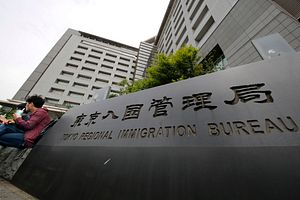On Tuesday, Japan’s Ministry of Justice released a preliminary report showing an 80 percent surge in the number of asylum seeker applications received in 2017. Last year marked a record high of 19,628 applications — a drastic increase from the 10,901 applications received the year before and the highest figure yet since government records began in 1982.
A breakdown of the applications by nationality shows more than 80 percent came from the Asia-Pacific, with only 1 percent coming from conflict zones in the Middle East and Africa. Philippine nationals accounted for the majority of applications with 4,895 — three and a half times more than in 2016. Trailing closely behind was Vietnam with 3,116 applications, followed by Sri Lanka (2,226) and Indonesia (2,038).
However, no asylum seekers were accepted from the ten countries with the highest volume of applications.
Despite applications soaring in 2017, only 20 individuals were granted asylum; the refugee intake actually fell by eight from the previous year. Those granted refugee status included five Egyptians, five Syrians, and two Iraqi nationals along with 45 other refugee applicants given temporary residence under humanitarian considerations.
Last year marked the second consecutive year that asylum applications have topped 10,000. The influx of applications has led to a painstakingly slow review process, with only 10 applicants recognized as refugees between January and September last year. As of the end of 2017, a backlog of 18,000 applications had not yet been examined.
Japan’s rigorous 99 percent rejection policy has left critics in the international community baffled. With each asylum application having a meager 0.1 percent chance for success, the chairman of the Japan Association for the UNHCR, Saburo Takizawa, has criticized Japan’s “closed door” refugee system as being virtually “meaningless” for only “saving 20 people.”
Japan’s lawmakers have had the opposite reaction. The government is working to implement an even stricter refugee screening process, clamping down on applicants exploiting a working permit loophole. The influx of applications is said to stem from blanket work permits being issued since 2010 to asylum seekers undergoing a processing period of more than six months. On average, processing takes around 10 months.
But late last year, the government introduced plans to crack down on “fake” refugees, economic migrants from impoverished countries. Ministry of Justice officials say that 30 percent of asylum applicants were fleeing personal debt as opposed to persecution, claiming widespread abuse of the UN Refugee Convention.
Starting from January 15, first-time asylum seekers who don’t meet the criteria specified in the UN Refugee Convention or those who have reapplied for the same reasons face forced deportation once their temporary visa expires. Until recently, only applications lodged three times without legitimate grounds for claiming asylum were liable to lead to detention and deportation. Under the stricter system, this leniency will be revoked in favor of detention for first-time applications considered groundless. In addition, work permits will be issued depending on a new four tier classification based on how likely applicants are to qualify as refugees. On the other hand, foreigners already residing in Japan on short-term visas will have their applications fast tracked and evaluated within two months of filing an application.
The Justice Ministry says it aims to overhaul a system enabling back-door immigration and in particular wants to weed out asylum seekers who resubmit applications as a stalling tactic to continue working. They say the large volume of ineligible asylum seekers are hampering efforts to protect “true” refugees in need.
But Takizawa said the current black-and-white approach is too strict to adapt to the changing refugee climate. He has criticized Japan’s literal interpretation of the UN Refugee Convention.
The Ministry of Justice says since the new operation has come into effect, the first 15 days saw a 50 percent drop in applications per day compared with the number of applications made in December.

































